This article was co-authored by wikiHow Staff. Our trained team of editors and researchers validate articles for accuracy and comprehensiveness. wikiHow's Content Management Team carefully monitors the work from our editorial staff to ensure that each article is backed by trusted research and meets our high quality standards.
There are 11 references cited in this article, which can be found at the bottom of the page.
This article has been viewed 95,624 times.
Learn more...
The human ear canal naturally produces wax that can clog the ventilation or sound output of hearing aids. Hearing aids are typically cleaned by a healthcare professional every 3-6 months or each time you visit. Despite this, it is great to know how to keep your hearing aids in tip-top shape at home. It is recommended that you clean your device daily in order to extend the life of the piece and avoid bacterial buildup.
Steps
Purchasing Cleaning Supplies
-
1Use a brush. The hearing aid brush is a small, soft-bristled brush that is used to clean the end of the device where sound exits.[1] This can be purchased at your local drugstore or recommended by your healthcare professional. You can also use a clean toothbrush with soft bristles instead.
-
2Purchase a disinfectant. Ask your healthcare professional about specially formulated disinfectant sprays that are water-based. These can be used to clean as well as protect your device from contamination for up to five days. Avoid alcohol-based products as alcohol tends to break down the material of the piece faster. [2]Advertisement
-
3Use a pick. Picks are small tools that contain a wire loop on the end that assists in pulling earwax from the device.[3] They are inserted into the receiver tube in order to remove debris that is unable to be removed by wiping alone. They can be purchased at your local drugstore, online, or from your healthcare professional.
-
4Purchase a cloth or tissue. Soft and clean tissue or cloth can be used to wipe down the outer surface areas of our device. Make sure that disposable tissues do not contain lotions or aloe vera.[4] Additionally, if you use reusable cleaning cloths, make sure you clean the cloths regularly to avoid redistributing wax and debris onto the device. Tissue or cloths can be purchased at your local drugstore or supermarket.
-
5Opt for a multiTool. MultiTools are versatile devices that combine many tools in one. Not only do they come with brushes and picks, but they also come with magnets to assist in the removal of batteries.[5] They are usually available online or from healthcare professionals.
-
6Consider a blower or dryer. Hearing aid dryers are used to remove excess water after cleaning, or to prevent moisture-related problems. Hearing aids should be stored in a dryer overnight to keep them safe and dry. Dryers range in price from $5 to $90 and can be purchased online or from a healthcare professional.[6]
Cleaning BTE (Behind the Ear) and ITE (In the Ear) Hearing Aids
-
1Examine the device for wax build up. The first step is to make a quick visual examination of your device for visible buildup. Most hearing aids have specific parts where earwax tends to accumulate such as filters and wax guards, sound bores and hearing aid tips, and tubing.[7]
- Filters and wax guards offer built-in protection from ear wax. They are designed to be easily removed by the user and should be inspected daily for wax buildup.<refhttps://www.hearingspeech.org/how-to-clean-your-hearing-aids/</ref>
- The sound bore or tip of the hearing aid is where the sound exits. This part can easily become clogged and should be inspected daily for wax buildup.
- The tubing connects the hearing aid to the ear mold. Wax can often accumulate here and the blockage requires special tools to dislodge the wax build-up. [8]
-
2Wipe visible wax with a cloth. The hearing aid should be wiped each morning with a soft cloth or tissue. It is best to wipe down hearing aids in the morning (not at night) so that the wax has had a chance to dry and will thus be easier to remove. Avoid wiping debris into the microphone ports.[9]
-
3Use a wax pick. The wax pick should be used to remove wax buildup from the receiver or speaker of the aid. The small wire loop should be inserted into the opening of the speaker until resistance is felt. Scoop out wax from the opening until all is removed.
-
4Separate the ear molds from the aids. For BTE aids, disconnect the ear mold from the hearing aid by pinching the tubing with one hand and the pinching the ear hook with the other. Twist and pull the tubing from the ear hook, making sure that you are near the seam between the two.
-
5Clean and dry the ear molds. Once the ear molds are removed from your BTE device, they should be soaked for 10 minutes in warm, soapy water. After 10 minutes, dry with a clean, soft towel, and use a dryer to remove excess water from the tubing.
- Do not soak the hearing aids—only the ear molds.
-
6Reassemble. Once the ear molds are completely dry, reassemble by twisting the tubing onto the ear molds so that the wing of the ear mold is oriented oppositely of the sound opening.
Improving the Lifespan of Hearing Aids
-
1Clean daily. Whether using a cloth or specific tools, be sure to rid your device of dust and debris daily. Clean hearing aids and parts in the morning to ensure that wax is dry and easier to remove.
-
2Protect your batteries. Remove your hearing aid batteries nightly and store in a dehumidifier or dryer in order to protect them from moisture. MultiTools usually provide a device to assist in the removal of batteries.[10]
- If you don’t have a dryer for storage, leave the batteries in the hearing aid and leave the compartment open over night to dry out any moisture.
- Heat tends to damage batteries so choose to store them at room temperature.[11]
-
3Avoid foreign materials. Insert hearing aids only after you have applied makeup, hairspray and other products to avoid buildup of foreign matter. Keep hearing aids in a safe, dry location (such as a dehumidifier or dryer) when not in use.[12]
-
4Visit your audiologist often. Visit your healthcare professional every 3-6 months to do hearing checks and to check the functionality of your device. Never attempt to do repairs on your own.[13]
Warnings
- Do not use water, cleaning fluids, solvents or alcohol, as these could damage your hearing aids.⧼thumbs_response⧽
References
- ↑ https://www.truhearing.com/clean-care-hearing-aids/
- ↑ http://www.audiologyonline.com/ask-the-experts/cleaning-and-disinfecting-hearing-aids-487
- ↑ http://lloydhearingaid.com/accessories/216/ear_wax_pick
- ↑ http://www.starkey.com/blog/2013/08/simple-at-home-hearing-aid-maintenance-tips
- ↑ https://www.manualslib.com/manual/1265915/Bernafon-Zerena.html?page=16
- ↑ http://www.healthyhearing.com/report/47795-How-to-remove-ear-wax-from-your-hearing-aids
- ↑ https://www.hearingspeech.org/how-to-clean-your-hearing-aids/
- ↑ http://www.healthyhearing.com/report/47795-How-to-remove-ear-wax-from-your-hearing-aids
- ↑ http://www.starkey.com/blog/2016/03/hearing-aid-cleaning-tips


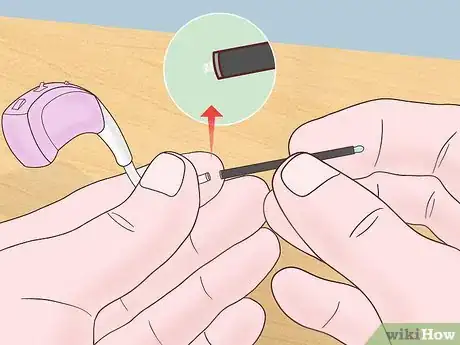
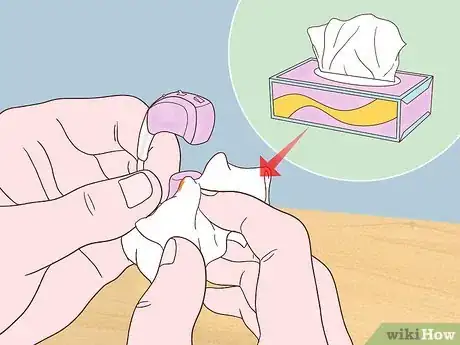
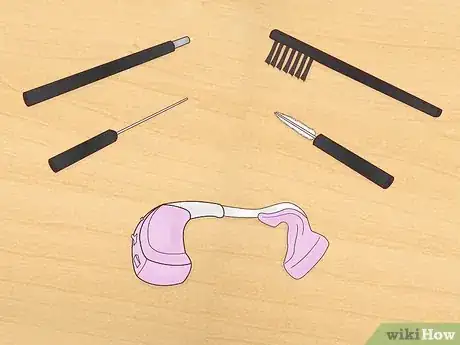
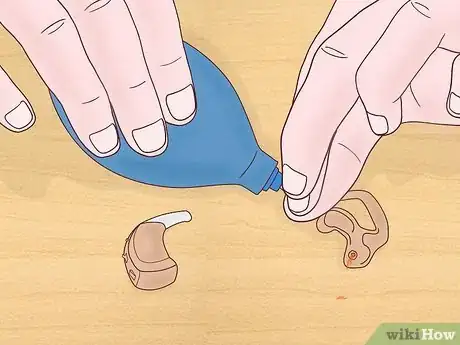
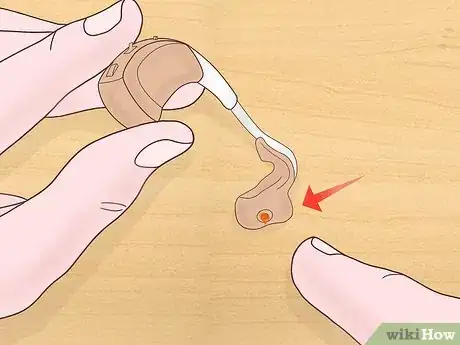
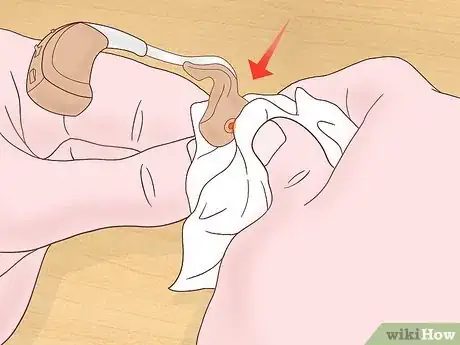
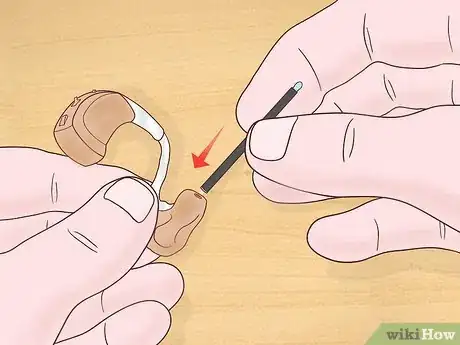
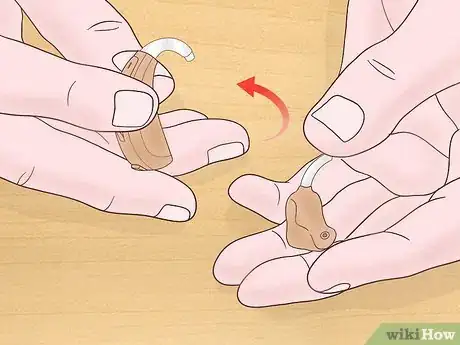
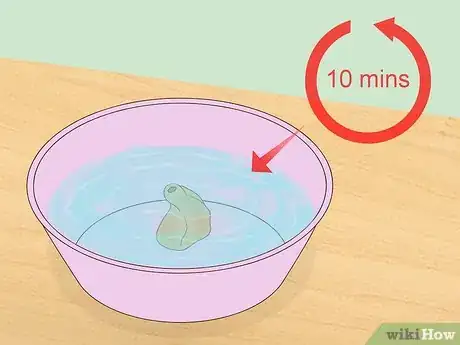
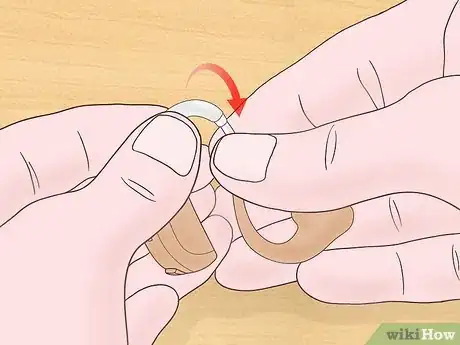
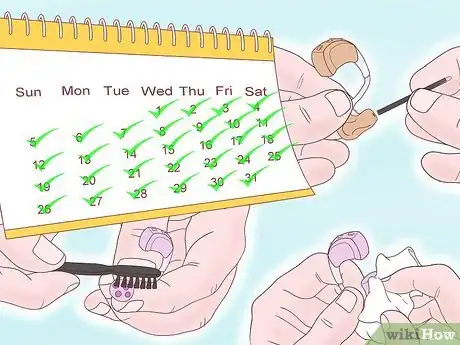
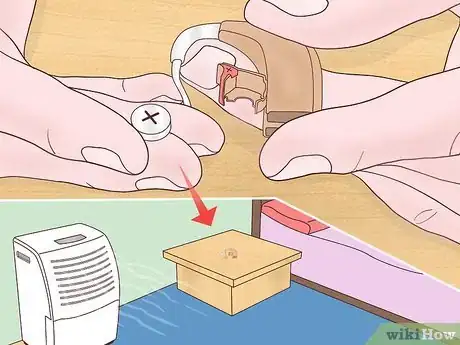

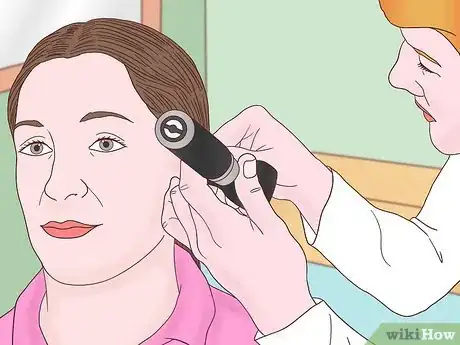
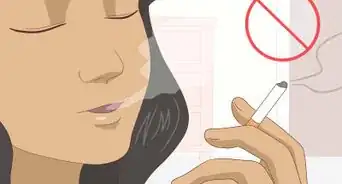









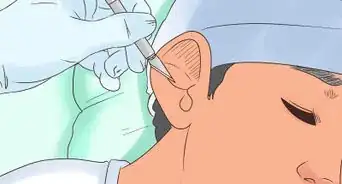
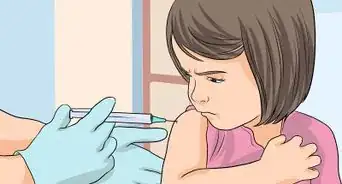
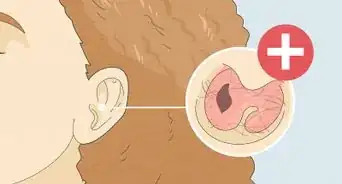







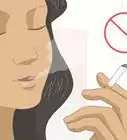






































Medical Disclaimer
The content of this article is not intended to be a substitute for professional medical advice, examination, diagnosis, or treatment. You should always contact your doctor or other qualified healthcare professional before starting, changing, or stopping any kind of health treatment.
Read More...